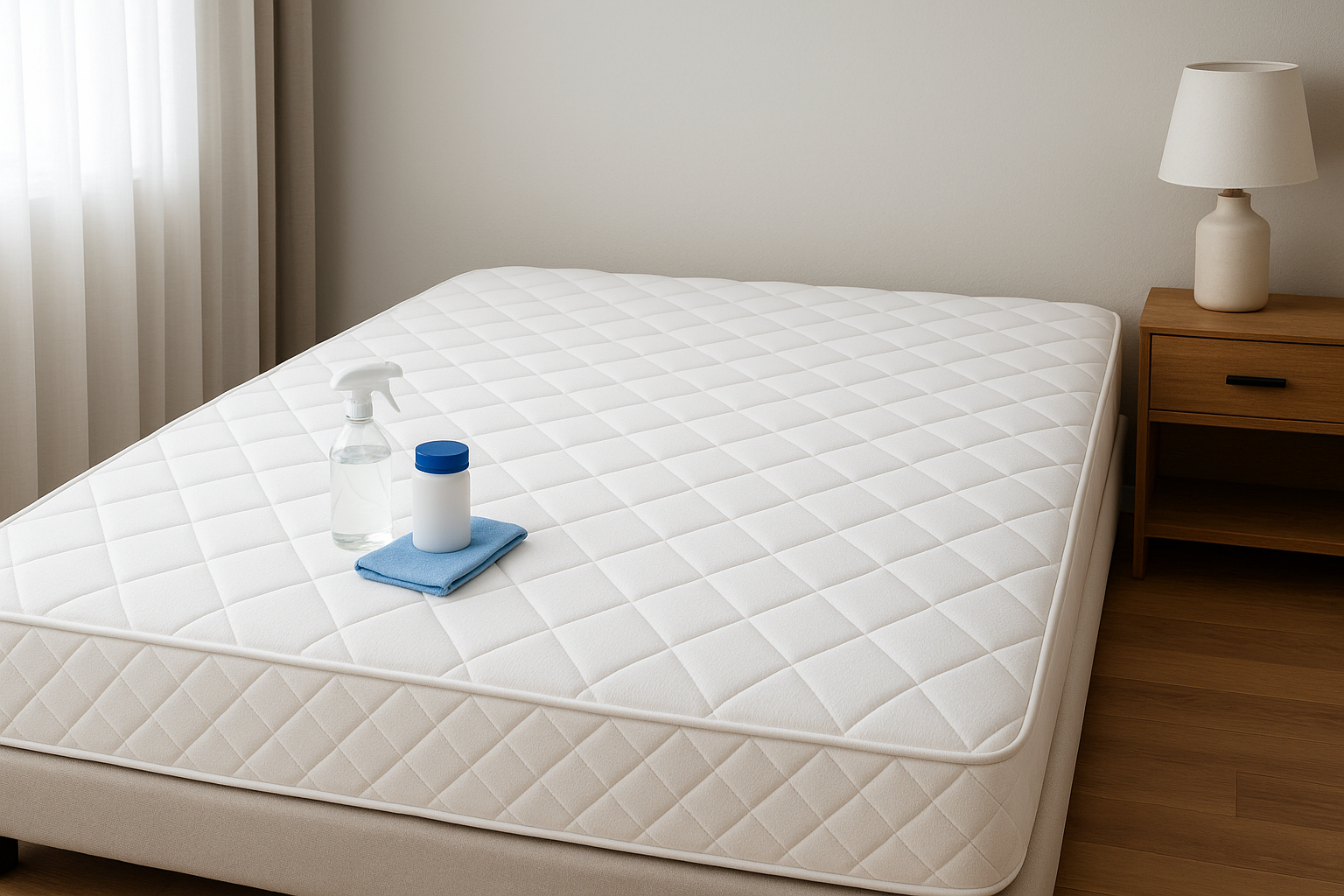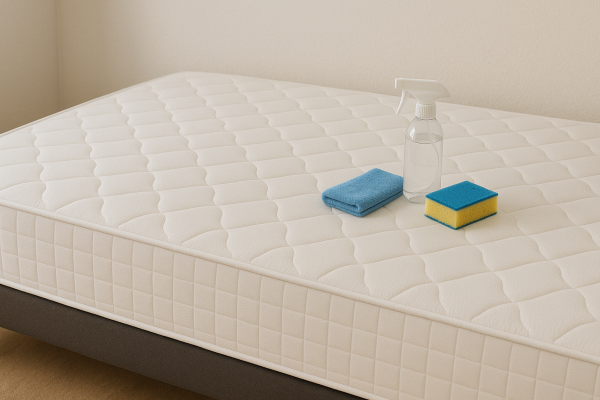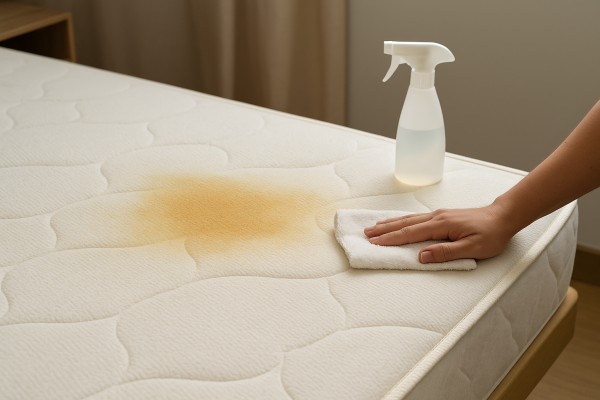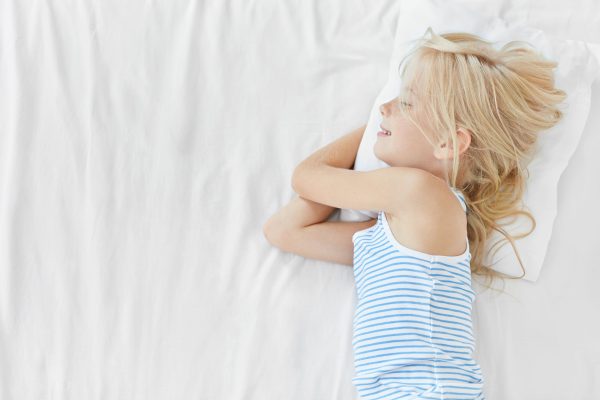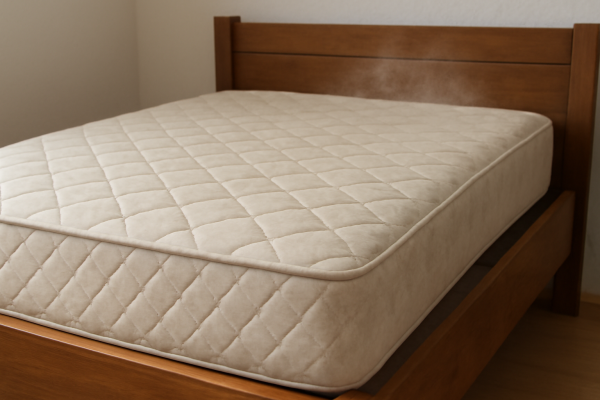Accidents happen – whether it’s a toddler’s bedwetting mishap, your pet’s overnight surprise, or an adult dealing with incontinence. The good news? You don’t need to panic or immediately replace your mattress. With the right approach, you can completely eliminate both urine stains and that lingering ammonia smell that seems to get worse over time.
The key is understanding that urine isn’t just a surface stain – it penetrates deep into mattress layers, especially foam, where it can harbour bacteria and create persistent odours. Fresh accidents are easier to tackle, but even dried, set-in urine can be successfully removed with patience and the right techniques.
Let’s dive into how to get urine out of your mattress quickly and safely, covering everything from immediate cleanup to deep sanitisation methods that actually work.
First Steps for Fresh Urine: Act Fast, Act Smart
When you discover fresh urine on your mattress, your first instinct might be to scrub – but resist! Rubbing will only push the liquid deeper into the foam layers and spread the stain.
Here’s what to do immediately:
- Blot, don’t rub – Use clean, absorbent towels to soak up as much liquid as possible. Press firmly and lift straight up, working from the outside of the stain inward.
- Strip the bedding – Remove all sheets, pillowcases, and mattress protectors (if you have them) and wash immediately in hot water.
- Avoid heat – Never use a hairdryer or place the mattress in direct sunlight while wet, as heat will set the proteins in urine and make odours permanent.
For a quick DIY solution, mix equal parts white vinegar and water in a spray bottle. Lightly mist the affected area – don’t soak it – then sprinkle a generous layer of baking soda over the damp spot. The vinegar neutralises the ammonia while baking soda absorbs moisture and odours. Let this sit for 15-20 minutes before vacuuming up the powder.
If you have an enzymatic cleaner designed for pet accidents, now’s the time to use it. These biological cleaners break down the proteins in urine that cause lingering smells.
How to Remove Dried Urine & Set-In Odours
Dried urine presents a bigger challenge because the liquid has had time to penetrate deep into your mattress layers, forming salt crystals that bind with foam materials. The ammonia smell often becomes more pronounced over time, especially in humid Australian climates.
- The Deep-Clean Method: Start by locating all affected areas. Sometimes dried urine stains aren’t visible to the naked eye – use a UV blacklight torch in a dark room to reveal old stains that glow under ultraviolet light.
- White Vinegar & Baking Soda Treatment: Mix 240ml white vinegar with 240ml warm water and add 2 tablespoons of liquid laundry detergent. Spray this solution generously over the stained area, ensuring it penetrates the surface. Let it sit for 10-15 minutes, then blot with clean towels. Follow immediately with a thick layer of baking soda and let it sit for 8-12 hours (overnight works well).
- Hydrogen Peroxide Power Clean: For stubborn stains and persistent odours, create a stronger solution: 120ml hydrogen peroxide (3% solution from the pharmacy), 3 tablespoons baking soda, and a few drops of liquid dish soap. Add 2-3 drops of eucalyptus or tea tree oil for extra antimicrobial action. Spray this mixture onto the affected area and let it foam for 10 minutes before blotting dry.
- Commercial Enzymatic Cleaners: Products like Nature’s Miracle or Anti Icky Poo are specifically designed to break down biological stains. These work particularly well on how to get urine smell out of a mattress when dry, as they target the protein compounds that cause odours. Follow the manufacturer’s instructions, but typically you’ll need to saturate the area and allow 24-48 hours for full enzyme action.
- Critical Drying Steps: Proper drying is essential to prevent mould and mildew. Use fans to circulate air around the mattress, and if possible, prop it up vertically against a wall in a well-ventilated area. Avoid steam cleaners on foam mattresses – the heat and moisture can damage the material and create ideal conditions for bacterial growth.
You might need to repeat this process 2-3 times for heavily soiled areas. Don’t be discouraged if the smell lingers after the first treatment – dried urine often requires multiple cleaning cycles to completely eliminate.
How to Get Urine Out of Memory Foam Mattress
Memory foam mattresses require special care because their dense, open-cell structure absorbs liquids like a sponge. The foam’s temperature-sensitive properties also mean it can be damaged by harsh chemicals or excessive heat.
The Gentle Approach for Foam:
- Never oversaturate memory foam with cleaning solutions. Instead, use a light misting technique – you want the cleaner to penetrate without waterlogging the foam layers. Start with the vinegar solution mentioned earlier, but apply it more sparingly. Spray lightly, then immediately blot with absorbent towels. The key is working in small sections and removing moisture as you go.
For memory foam, baking soda is your best friend. After treating with vinegar solution, cover the entire affected area with a generous layer of baking soda. The powder will draw out moisture and neutralise odours without damaging the foam structure. Leave it for at least 12 hours – longer for severe odours.
Avoid These Common Mistakes:
- Don’t use enzyme cleaners at full strength on memory foam – dilute them 1:1 with water
- Never use bleach or ammonia-based cleaners, which can break down foam materials
- Resist the urge to speed-dry with heat sources like hairdryers or heaters
Drying Memory Foam Properly:
Memory foam takes longer to dry than traditional spring mattresses. Position fans to blow air across the surface and, if possible, place the mattress in a room with good cross-ventilation. Indirect sunlight through a window can help, but avoid placing foam directly in harsh sun, which can cause it to deteriorate.
The foam should feel completely dry to the touch and have no musty smell before you put bedding back on. This can take 24-48 hours in humid conditions.
Protecting Your Onebed Mattress: Prevention & Care
Onebed’s memory foam and hybrid mattresses – including the popular Onebed Original, Onebed X 12”, and Onebed Modular 12″ – are engineered with multi-layer foam systems that provide exceptional comfort but require proper care during cleaning incidents.
Mattress Protection is Key. Given that biological fluid damage typically isn’t covered under mattress warranties (including Onebed’s comprehensive 15-year warranty), prevention is your best strategy. Invest in a quality waterproof mattress protector – look for ones that are breathable to maintain the comfort benefits of your foam mattress.
For families with young children, consider double-layer protection: a fitted waterproof protector directly on the mattress, topped with a regular fitted sheet. This gives you backup protection if the first layer fails.
Tips to Prevent Future Accidents
Smart Prevention Strategies:
- Waterproof mattress protectors – Choose breathable, hypoallergenic options that won’t affect your mattress comfort
- Regular washing routine – Wash protectors and sheets weekly in hot water to prevent bacteria buildup
- Potty training preparation – Use disposable bed mats or washable waterproof pads as extra protection during the learning phase
- Pet management – If your furry friends sleep on the bed, place a washable throw blanket or pet-specific waterproof pad in their favourite spot
- Health considerations – For elderly family members or those managing incontinence, consider specialised mattress pads designed for extended protection
- Humidity Control: In Australia’s varied climate zones, managing bedroom humidity helps prevent odour development. Use exhaust fans, open windows for cross-ventilation, and consider a dehumidifier in particularly humid regions like tropical Queensland or coastal NSW.
Frequently Asked Questions
Can you remove urine smell from a mattress completely?
Yes, with the right approach and patience. Fresh urine is easier to eliminate, but even old, dried urine can be completely removed using enzymatic cleaners and proper drying techniques. The key is treating both the stain and the underlying odour-causing bacteria.
What neutralises urine odour best?
Enzymatic cleaners are most effective because they break down the protein compounds that cause ammonia smells. For DIY solutions, white vinegar followed by baking soda works well. Avoid masking odours with air fresheners – you need to eliminate the source.
How long does it take for urine to dry inside memory foam?
Memory foam can take 24-48 hours to dry completely, depending on humidity and airflow. Never put bedding back on until the foam feels completely dry and has no musty smell. Rushing this step can lead to mould growth.
Will hydrogen peroxide damage my mattress?
3% hydrogen peroxide (the standard pharmacy strength) is generally safe for most mattress materials when used properly. However, it can have a mild bleaching effect, so test on an inconspicuous area first. Avoid using it on coloured foam or fabric surfaces.
Is vinegar safe on memory foam mattresses?
White vinegar is safe for memory foam when diluted with water and used sparingly. It’s acidic enough to neutralise ammonia odours but gentle enough not to damage foam structure. Always blot excess moisture immediately after application.
Keep Your Mattress Fresh for Better Sleep
Urine accidents are a normal part of life – especially in households with children or pets. The most important thing to remember is that quick action and the right cleaning approach can restore your mattress to its original freshness.
Whether you’re dealing with a one-off accident or managing ongoing bedwetting, these techniques will help you maintain a clean, odour-free sleeping environment.
Remember: blot don’t rub, use appropriate cleaners for your mattress type, and always ensure complete drying before making the bed again. If you’re tackling tougher spots, make sure to check our separate articles on removing blood and different stains for targeted tips.
Ready to upgrade your sleep setup with better protection? Whether it’s a kids’ bed or your main mattress, keeping it clean is key to better sleep. Explore Onebed’s range of mattresses – available in Single, King Single, Double, Queen, and King sizes, and built for real-life comfort. Don’t forget to add a quality mattress protector to your order – your future self will thank you!


















